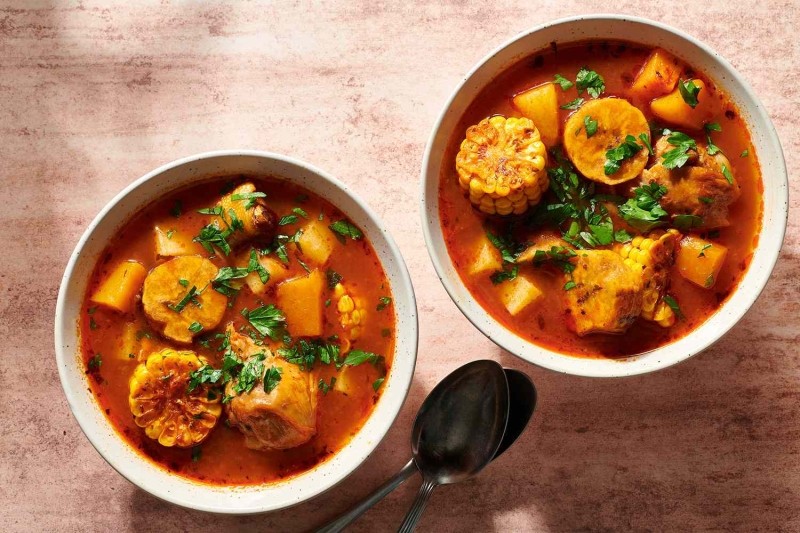Puerto Rican Comfort in a Bowl
Prep: 30 mins
Cook: 115 mins
Total: 2 hrs 25 mins
Servings: 8 servings
Yield: 3 quarts
If you’re looking for pure comfort in a bowl, you’ll find it in sancocho, a Latin-American meat stew brimming with root vegetables and scented with cilantro. I was born and raised in Puerto Rico, and when we moved to the mainland, my mother would serve us heaps of it whenever we felt homesick. It never failed to bring us back to our little island. It will do the same for any Boricua in your life.
Like many Caribbean dishes, this stew had very humble beginnings. It was cobbled together from whatever scraps enslaved workers could get their hands on and was made heartier with the root vegetables that were the mainstay of their diets. Today, it’s a revered dish that symbolizes the Puerto Rican spirit: to create something from nothing and give it new life.
When It Comes to Sancocho, the Possibilities Are Endless
Sancocho works with almost any protein that can handle a longer cook time. There are dozens of variations throughout the Caribbean and Latin America, made with combinations of beef, goat, pork, chicken, and fish. This version is my mother’s, who is Colombian, but grew up in Puerto Rico.
In the lean times of my childhood, she used chicken drumsticks (as is traditional in Colombian sancocho) instead of the more expensive cuts of beef used in Puerto Rican versions of this stew. We didn’t have access to many of our island ingredients in Houston in the ’80s. She would substitute sweet potatoes for the Caribbean pumpkin and cilantro for the recao (also called culantro) that grows like a weed all over Puerto Rico.
If you can’t source calabaza, substitute with kabocha squash, butternut squash, or sweet potatoes. Try taro or malanga if you can’t find yuca and green plantain. If you can’t source any of these, just sub with equal parts of Yukon gold potatoes.
The substitutions didn’t matter, though, as she always started with a solid foundation of sofrito, the pungent flavor base of many Puerto Rican dishes. She followed that with a generous sprinkling of adobo and sazón, spice blends that gave the broth a deep earthiness and everything in the stew a golden hue. Though it takes about an hour and a half of simmering on the stove to make sancocho, it’s well worth the wait. The sum is much greater than its parts.
Tips for Making a Perfect Bowl of Sancocho
To add loads of flavor, don’t skip searing the chicken in the same pot you’ll use to make the sancocho. Do it in small batches so you don’t crowd the pot and steam the meat. The fond (yes, the burnt-looking bits) that develops on the bottom of the pot and the browning on the chicken add rich umami to the stew.
When it comes to temperature, low and slow is the way. Simmer the stew, don’t boil it, which can leave you with tough meat with chunks of fat and collagen that haven’t had time to break down. It will also break the veggies down too quickly, leaving the broth muddy and the vegetables—which you should cut in similar sizes so they cook evenly—with no texture. If you’re using cuts of meat that take longer to tenderize, add the vegetables in the last 45 minutes of cooking time so they don’t overcook and fall apart.
On the other side of that equation, don’t leave the stew on the stove for too long. Overcooking can leave the meat stringy and dry and will pulverize your vegetables. Cover the pot to prevent the broth from evaporating, leaving the lid slightly cracked to prevent a boilover. If the broth runs low, simply add more or use water to top up the pot.
«This is a hearty and vegetable-packed stew, made all the more flavorful by boiling the bone-in chicken in the sauce. It tastes even more delicious the second day and is great served with some rice on the side.» —Julia Hartbeck
A Note From Our Recipe Tester
Ingredients
- 1 medium yellow onion, quartered
- 1 medium green bell pepper, quartered and seeded
- 1/2 cup coarsely chopped, lightly packed fresh cilantro leaves and stems, more leaves for garnish
- 4 medium garlic cloves, smashed
- 2 tablespoons olive oil, divided
- 2 pounds chicken drumsticks, skin removed
- 1 1/2 teaspoons fine salt, more to taste
- 3/4 teaspoon freshly ground black pepper, more to taste
- 1 (8-ounce) can tomato sauce
- 1 tablespoon adobo all-purpose seasoning
- 1 1/2 teaspoons sazón with achiote
- 1/2 teaspoon dried oregano
- 2 bay leaves
- 16 cups (4 quarts) chicken stock, more as needed
- 1/2 pound Yukon Gold potatoes, peeled and cut into 3/4-inch dice
- 1/2 pound yuca root, peeled, woody center removed, cut into 3/4-inch dice
- 1 medium green plantain, peeled and cut into 1-inch thick rounds
- 1/2 pound calabaza pumpkin (Caribbean pumpkin), peeled and cut into 3/4-inch dice
- 1 medium ear of corn, cut into 1-inch rounds
- Cooked white rice, for serving, optional
Steps to Make It
-
Gather the ingredients.
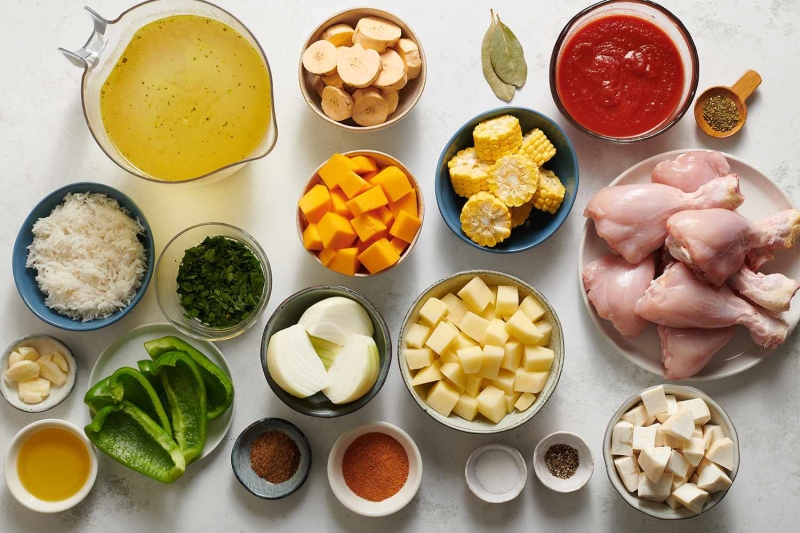
-
Make Puerto Rican sofrito (recaito). Pulse, then process the onion, bell pepper, cilantro, garlic, and 1 tablespoon olive oil in a food processor or blender until it resembles a chunky sauce. Set aside 1/2 cup of the recaito. Freeze the rest for future preparations.
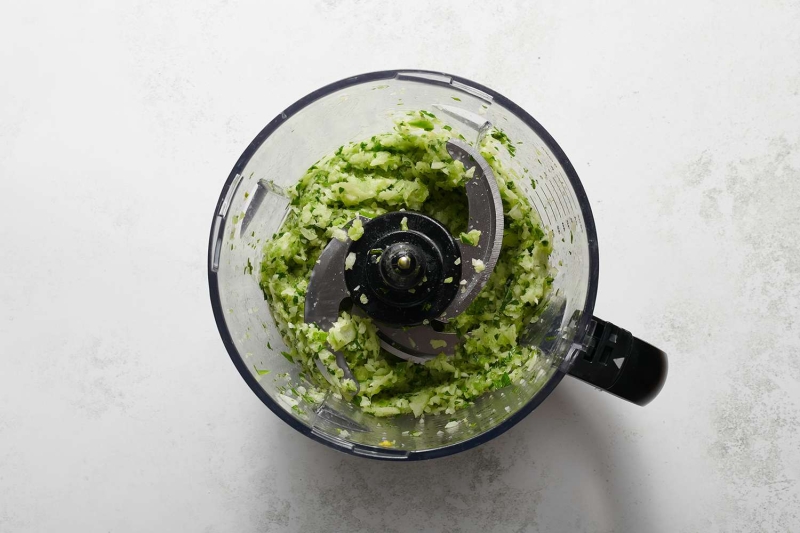
-
Add the remaining 1 tablespoon olive oil to a very large, heavy-duty pot over medium-high heat.

-
Dry the drumsticks with a paper towel and season them with salt and pepper.

-
Brown the chicken in batches. Remove from the pot as they are seared and set aside.
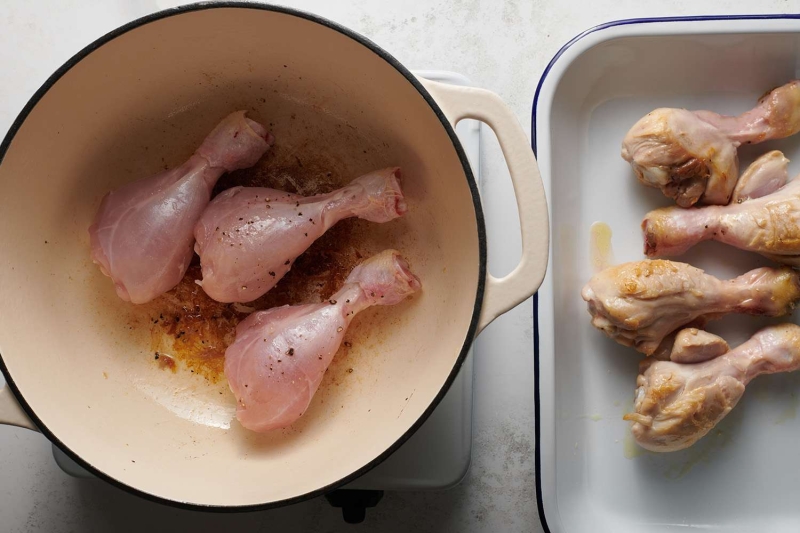
-
Lower the heat to medium. Remove any excess fat from the pot, leaving about two tablespoons. Add the reserved 1/2 cup of recaito and sauté until fragrant, about 2 minutes.
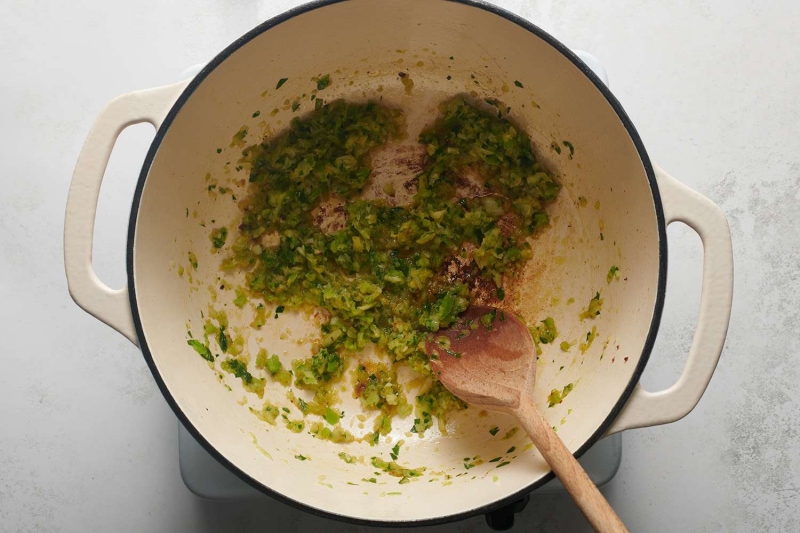
-
Add the tomato sauce, adobo, sazón, oregano, and bay leaves. Sauté for 1 minute to bloom the spices, scraping up any brown bits on the bottom of the pot with a wooden spoon.
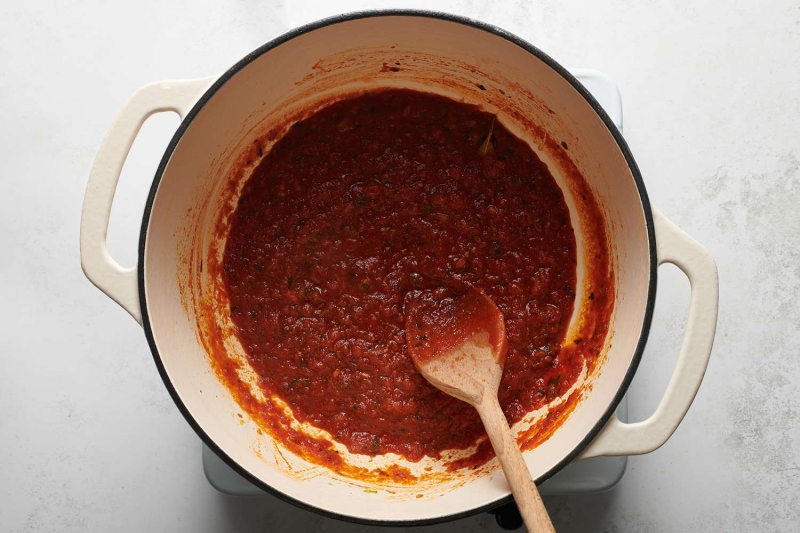
-
Add the chicken stock and bring to a boil over high heat. Add salt and pepper to taste, keeping in mind that as the broth cooks and evaporates, it becomes saltier.
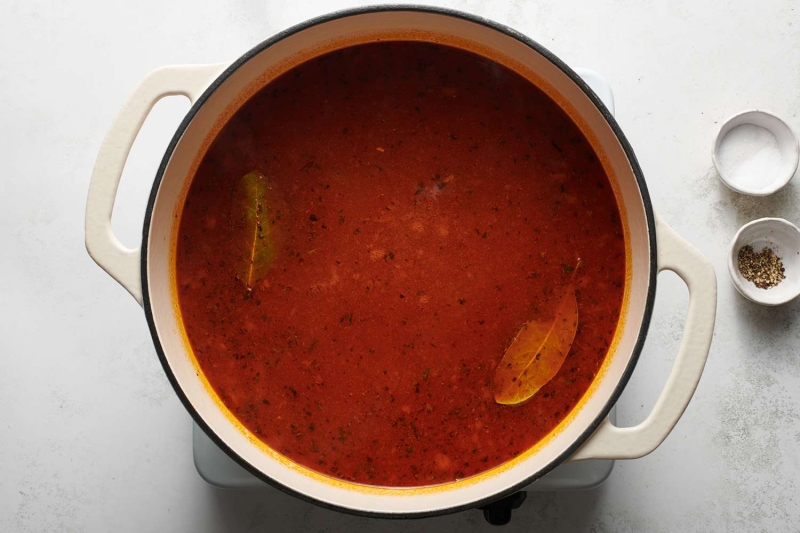
-
Decrease the heat to medium-low. Add the chicken back to the pot and cover, leaving the lid slightly cracked. Simmer on low for 1 hour.
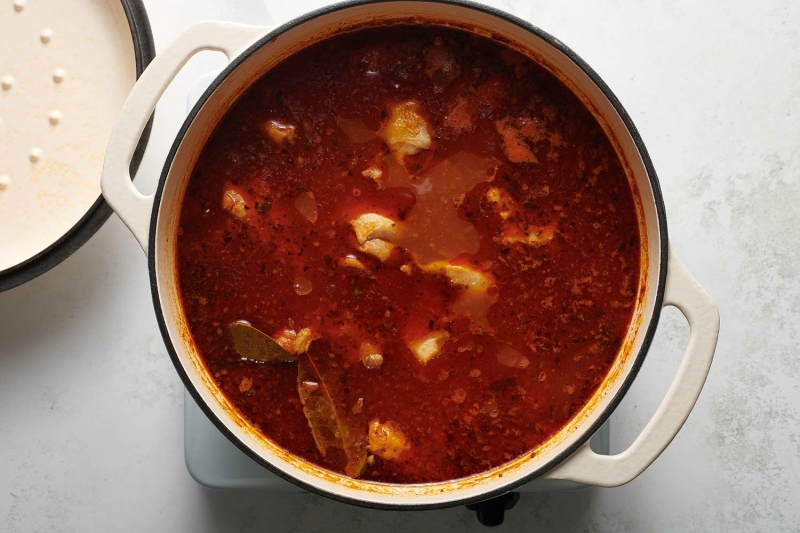
-
Skim the fat off the top of the stew with a spoon. Add the potatoes, yuca, plantain, calabaza, and corn. If necessary, add more chicken stock to cover the ingredients in the pot. Cover, leaving the lid slightly cracked, and simmer on low until the vegetables are fork tender, about 30 minutes more.
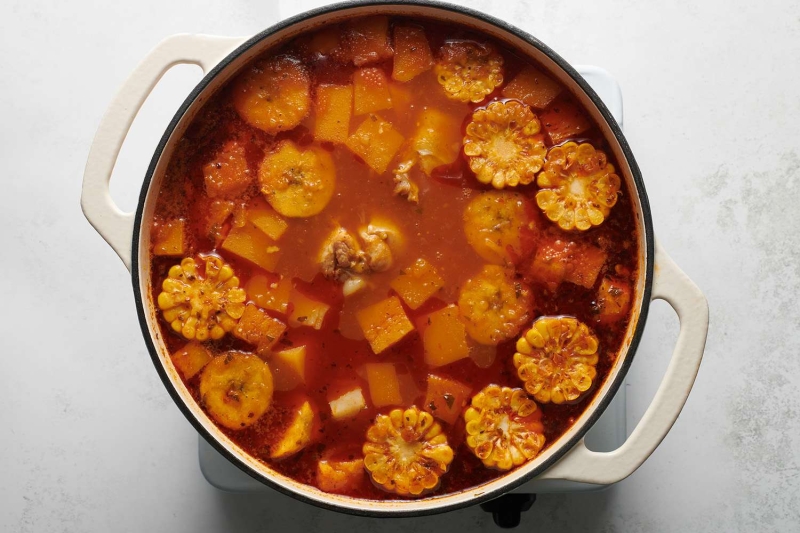
-
Taste the broth, and season with salt and pepper if necessary. Serve the stew in large bowls and garnish with cilantro leaves. Serve as is or with a side of white rice.

Recipe Variations
- Any vegetable that can withstand a long cook is excellent in this stew, especially roots and tubers.
- As far as proteins go, opt for tough, fatty cuts, like chuck, round, oxtail, and chicken thighs. If using beef or other red meat, substitute the chicken stock with beef stock.
How to Store and Freeze Sancocho
- You can store leftover sancocho in your fridge in an airtight container for a few days. If you want to freeze it, divide it into individual portions. As long as it’s in airtight containers, it will keep for up to two months. To prevent freezer burn, fill the containers to the top, leaving about 1/2-inch of headspace. Cover the surface of the stew directly with plastic or wax paper.
- You can reheat sancocho on the stove or in the microwave. You might want to add a bit of water to thin the broth. Make sure to cook the stew until the meat is heated completely through.
| Nutrition Facts | |
|---|---|
| Servings: 8 | |
| Amount per serving | |
| Calories | 556 |
| % Daily Value* | |
| Total Fat 20g | 26% |
| Saturated Fat 5g | 25% |
| Cholesterol 158mg | 53% |
| Sodium 1511mg | 66% |
| Total Carbohydrate 51g | 19% |
| Dietary Fiber 3g | 12% |
| Total Sugars 16g | |
| Protein 42g | |
| Vitamin C 29mg | 143% |
| Calcium 58mg | 4% |
| Iron 4mg | 20% |
| Potassium 1417mg | 30% |
| *The % Daily Value (DV) tells you how much a nutrient in a food serving contributes to a daily diet. 2,000 calories a day is used for general nutrition advice. | |
